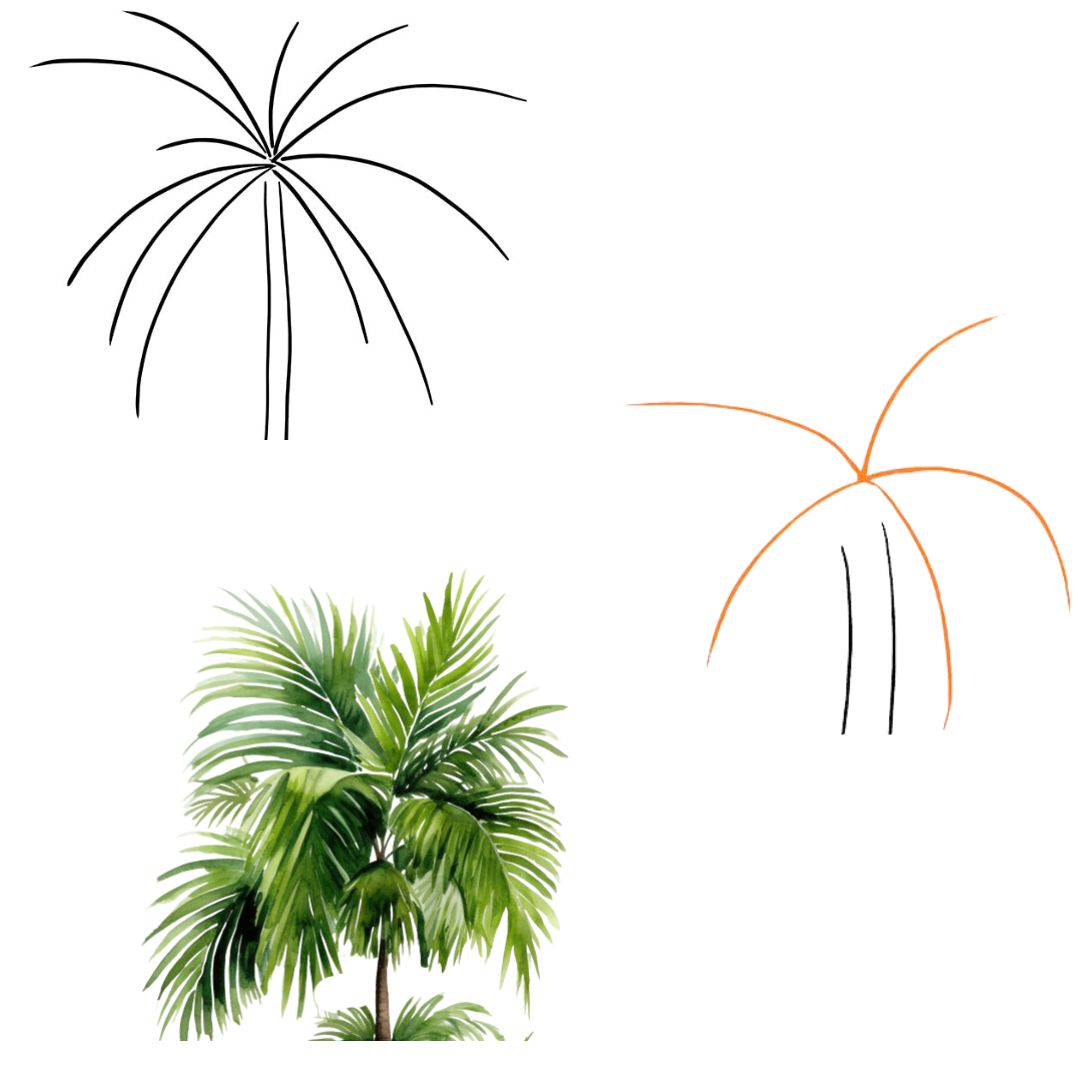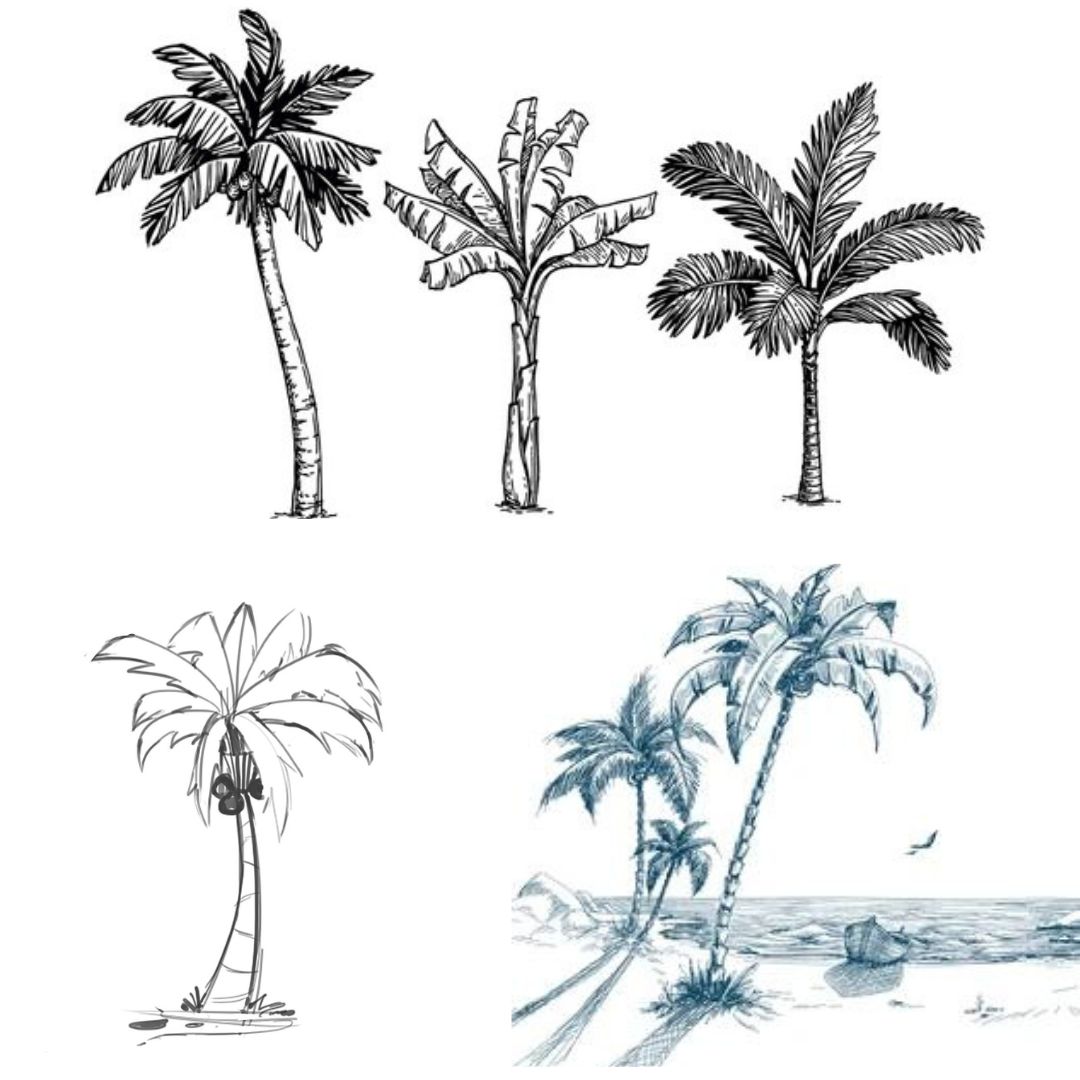
By Suneha
How To'sWelcome to Sketch My Pic, where art meets knowledge. In today's drawing and sketching guide, we will discuss how to draw a palm tree. This will be an easy guide to follow for beginners as well as professional artists.
Palm trees are easy to draw and are an excellent start to gaining knowledge on sketching and drawing. There is always room for variation. For instance, you can draw a palm tree in any shape and size and make several different backgrounds, like a sunset or sea. Remember, practice makes perfect, so do not be disheartened if your first try did not go well. The more you practice, the better you will get.
Without further ado, let us begin this guide on How to Draw A Palm Tree step by step!
1. Pencils - You will need pencils to sketch the outline and fill in the details.
2. Drawing paper and a drawing board—You will need drawing paper to sketch the palm tree. A drawing board also helps ease the process of drawing, but as long as you have a flat surface, this can be omitted.
3. Eraser—You will need an eraser to erase any mistakes in your drawing. Use kneaded rubbers and erasers to prevent damage to your drawing paper and sketch.
4. Pen for outlining (optional)
5. Colored Pencils for coloring (optional)
Check out: How To Draw A Snake
The first step to drawing anything is to create a mind map in your head. In this tutorial, we will start with how to draw the leaves of the palm tree first. The leaves of a palm tree are very distinct and need to be drawn with precision and accuracy. Then, we move on to the palm tree trunk and the background (optional).
Step 1: Draw the guidelines that will help in tracing the leaves of your palm tree
Since this is a beginner tutorial, you can start with a small number of lines, depending on your choice, and fill in the details of the leaves' shape around the lines. The ends of the leaves should be narrower and pointier than the center, which is much thicker. To make the leaves look realistic, add notches at certain points.

Once you are done filling in the details of your palm leaves, you can also add coconuts to make them more realistic. Make three spherical shapes in the center where all the leaves overlap. Fill in a color like brown or black into the spheres to depict your coconuts. With this, the tutorial for the palm leaves is completed!
Step 2: Draw the trunk of the tree
Once you have completed the palm leaves, start with the trunk of the palm tree. Usually, the trunk's top part is narrower and gets wider as you get closer to its roots and ground. You can also curve the trunk to make it look more natural.
Extend two slightly curved lines from the middle part of where the palm leaves overlap and make the gap between the two lines wider as you go down toward the ground. This will denote the thicker girth at the end of the palm trunk. You can add a bunch of curved lines inside the trunk to highlight its bark.
Other variations include criss-cross, zig-zag lines, small curved lines, and many more.

Step 3: Add in a background
Although this is an optional step, you can add a background like a sea or a sunset to enhance your sketch more. Add some grass near the palm tree and sand mounds to depict the sea. Add a sunset and waves to depict the sea, which is in the vicinity of the palm tree.
Step 4: Color the sketch
If you want to experiment with colors as well, you can start coloring your palm tree. Using watercolors or pastels, add natural colors and textures to your sketch.
With this, the full step-by-step tutorial is complete. Great job!
Check out: How To Draw A Bat
Palm trees are very easy to spot in tropical and warmer climates owing to their distinct leaves. There are over two thousand species of palm trees, and they have a rich history! They can be either shrub-like in size or absolute giants. For instance, the Quindio wax palm tree is the largest known species of Palm tree, growing to a height of 60 meters!
We hope this easy step-by-step guide was helpful to you! If you are interested in learning more about sketching and photography, check out our blogs at Sketch My Pic.